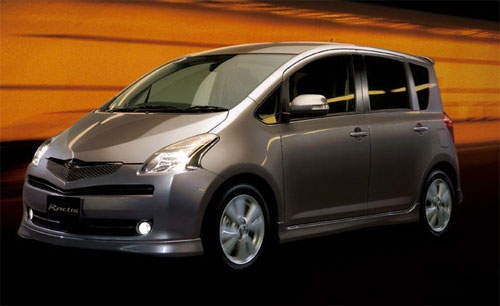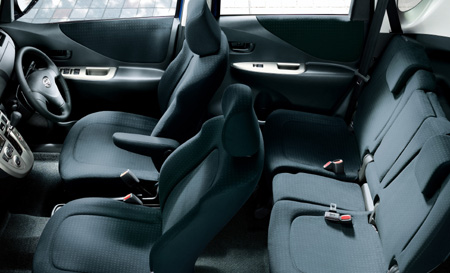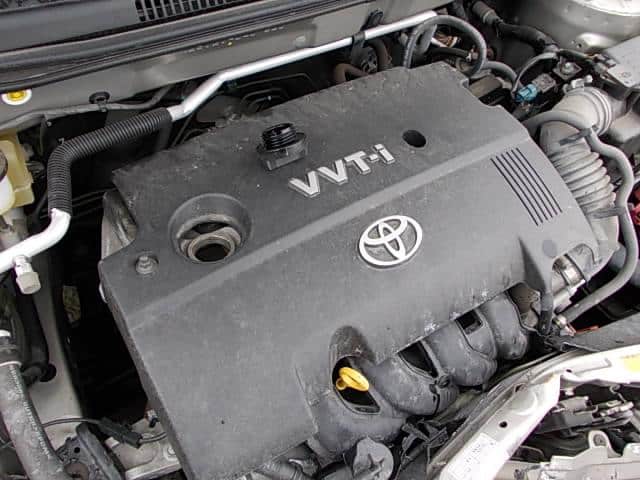What you must know about the Toyota Ractis 2007-2010 model

For anyone buying a used Toyota Ractis today with a budget of UGX 19,000,000 to UGX 25,000,000, you are likely purchasing a model from 2007 to 2010. I thought it prudent to tell you everything you need to know about this car.
The Toyota Ractis was first produced in October 2005.
It was introduced as a compact mini MPV (multi-purpose vehicle) based on the Toyota Vitz/Yaris platform, offering more interior space and flexibility while maintaining a small exterior footprint. The name “Ractis” comes from “Run + Activity + Space,” reflecting its design purpose.
Production spanned:
- First generation: 2005 to 2010
- Second generation: 2010 to around 2016 (some markets continued slightly longer)
First Generation (2005–2010)
Model Code: NCP100/NCP105
Launch Date: October 2005 (Japan)
Model codes have meaning, and we need to understand the difference between the Toyota Ractis NCP100 and NCP105, which mainly lies in their drivetrain configuration:
TOYOTA RACTIS NCP100
- Drivetrain: 2WD (Front-Wheel Drive)
- Engine: 1.3L or 1.5L
- Transmission: CVT or 4-speed automatic
- Market: Standard configuration for most urban users
- Fuel Economy: Slightly better than 4WD variant due to lighter weight
Arthur’s Note: Don’t buy the 1.3L Ractis, it is not worth it.
TOYOTA RACTIS NCP105
- Drivetrain: 4WD (Four-Wheel Drive)
- Engine: 1.5L only
- Transmission: 4-speed automatic
- Market: Designed for users in regions with poor road conditions or snowy areas (e.g. Northern Japan)
- Fuel Economy: Slightly lower due to added weight and drivetrain complexity
Quick Summary Table
| Feature | NCP100 (2WD) | NCP105 (4WD) |
|---|---|---|
| Drivetrain | Front-Wheel Drive | Four-Wheel Drive |
| Engine Options | 1.3L / 1.5L | 1.5L only |
| Transmission | CVT or Auto | 4-speed Automatic |
| Fuel Economy | Better | Slightly Lower |
| Purpose | Urban driving | Rougher conditions |
Key Features of the first generation:
The Toyota Ractis (2007/8-2010) represents the later years of the first generation of this compact MPV. Designed to offer space, efficiency, and flexibility in a compact body, the Ractis continued to serve small families, city drivers, and commercial users with dependable practicality.
Exterior and Design
The 2007–2010 Ractis retained the compact, tall-boy styling introduced in earlier models but with a more refined front fascia and updated headlights and grille design. Compared to the 2005-2006 models, it features subtle exterior upgrades that give it a fresher look without a full redesign.
Compared to the second generation (2011 onward), this version looks more conservative. The second-gen Ractis was developed in partnership with Subaru (as the Trezia), resulting in a sleeker, sportier appearance, improved aerodynamics, and slightly wider dimensions.
Interior and Cabin Space

The 2008–2010 model kept the class-leading interior space that made the Ractis popular. Its flat-folding rear seats and high roofline offer remarkable versatility for cargo or passengers.
- Compared to earlier models, the interior in this version received improved fabric choices, more modern trim options, and a slightly more intuitive dashboard layout.
- The second-generation (2011+) took a step further with a completely redesigned dashboard, enhanced sound insulation, and a more refined driving position.
Performance and Engine
This model is commonly powered by either a 1.3L or 1.5L VVT-i petrol engine, paired with a CVT or 4-speed automatic transmission.

- Earlier models had similar engine options but less refined CVT tuning, resulting in a smoother power delivery in the 2007–2010 version.
- The second generation introduced newer engine variants, such as the 1.3L 1NR-FE which offered improved fuel efficiency and lower emissions, along with start-stop systems in some trims for enhanced economy.
Ride Quality and Handling
The 2008–2010 model offers light steering, a tight turning radius, and a comfortable ride ideal for city driving.
- Compared to the earlier generation, handling is more balanced, and the suspension feels slightly firmer.
- The later generation improved further with enhanced chassis rigidity and better cornering stability, though it sacrificed a bit of the original’s simplicity and softness.
Safety and Technology
- This version comes standard with dual airbags, ABS, and optional side airbags, as well as ISOFIX anchors.
- Compared to earlier versions, this model offered improved crash protection and a more consistent level of safety across all trims.
- From 2011 onwards, safety tech advanced to include electronic stability control (VSC) and additional airbags in more variants.
Key Differences Summary
| Feature | 2005–2007 Ractis | 2007–2010 Ractis | 2011+ Ractis (2nd Gen) |
|---|---|---|---|
| Exterior Design | Basic, tall styling | Refined front and grille | More dynamic and modern look |
| Interior Quality | Functional, simple | Improved trim and layout | Full redesign, upscale feel |
| Engine & Transmission | 1.3L/1.5L, CVT/Auto | Smoother CVT tuning | Updated engines, start-stop |
| Safety Features | Dual airbags, ABS | More standard safety options | ESC, more airbags standard |
| Driving Comfort | Soft, city-friendly | Firmer, better handling | Improved stability, firmer ride |
| Fuel Efficiency | Moderate | Improved over earlier models | Best among the three |
The Toyota Ractis (2007–2010) hits a sweet spot between the no-frills simplicity of the early models and the modern sophistication of the second generation. It offers better refinement, comfort, and value without the higher costs associated with newer models.
It remains a top pick for those seeking:
- A practical city car with impressive interior space
- Low maintenance and high fuel economy
- A reliable vehicle for urban or light commercial use






